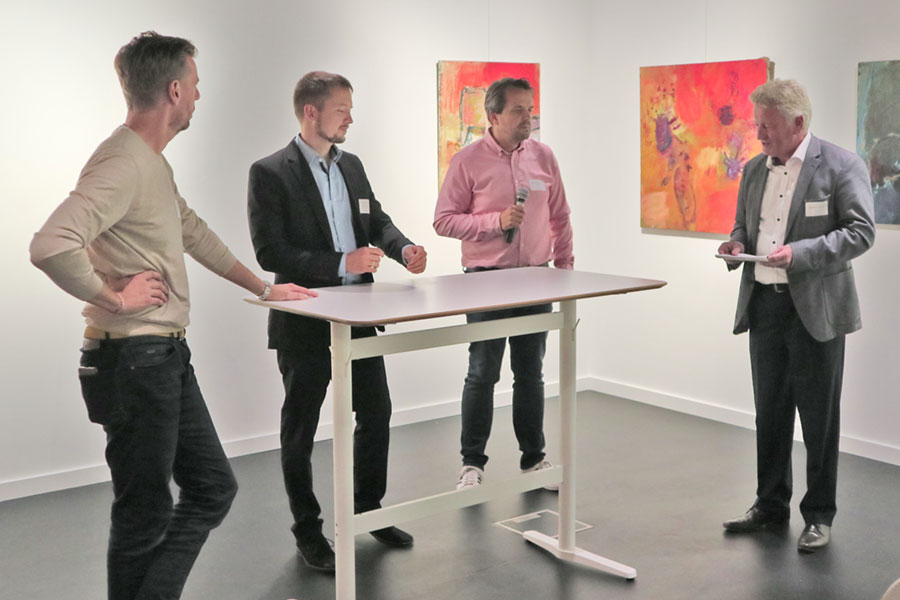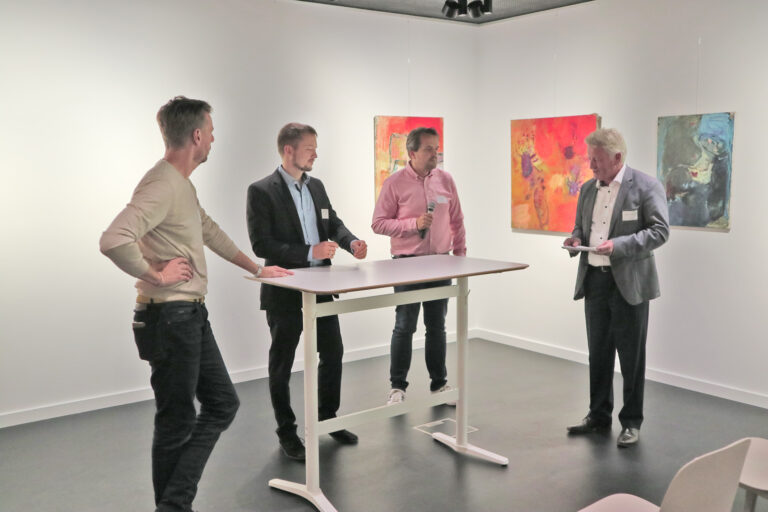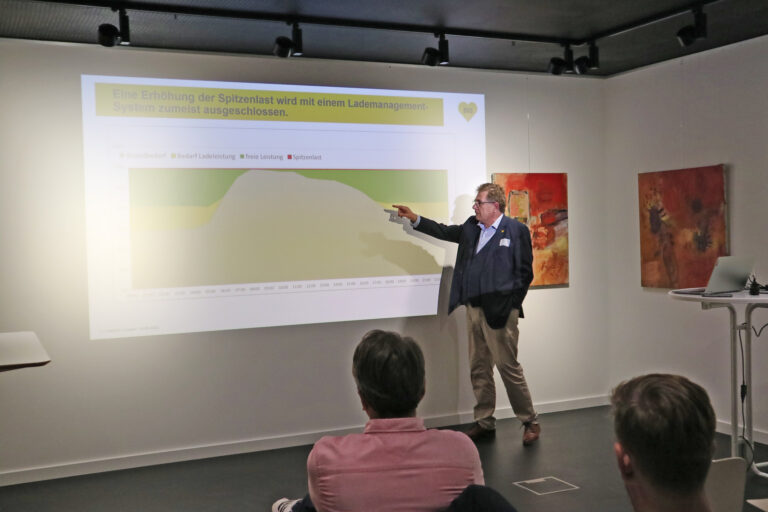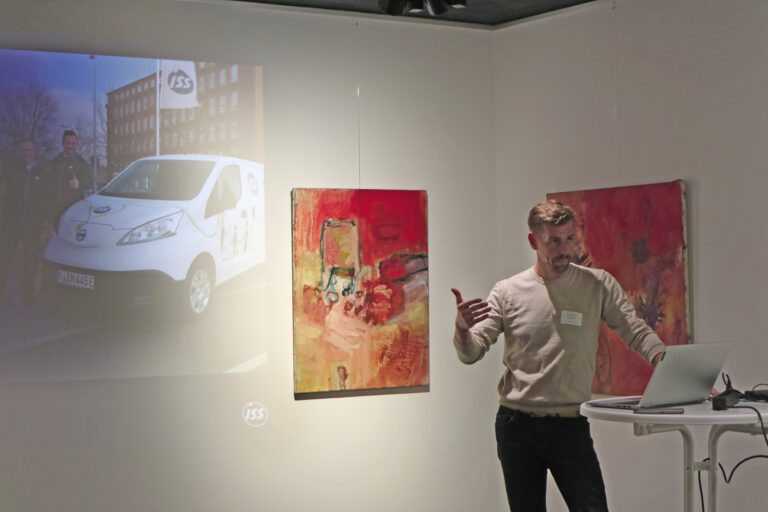Berlin, September 22, 2022 – To mark the company’s 30th anniversary, Carano Software Solutions, one of the leading providers of fleet software, hosted the Carano Fleet Day. The focus was on topics that will shape the fleet of tomorrow. In addition to the electrification of fleets, the future of company cars, car subscriptions and mobility budgets were also the subject of controversial discussions.
The renowned speakers at the event included Heinrich Coenen, Fleet Manager at Berliner Verkehrsbetriebe, Marcus Federhoff, Head of Operations at Fleet-Hub GmbH, Benjamin Simon, General Manager at ISS Energy Services GmbH in the Berlin/Hamburg metropolitan region and Hans-Joachim Guth, Managing Director of Carano.

Company car privilege, CO₂ emissions and car features on subscription
In the panel, Marcus Federhoff, Benjamin Simon and Hans-Joachim Guth discussed the so-called company car privilege. The panel participants are certain that company cars will remain an important part of the company mobility mix in the future. Whether this is really a privilege for the majority of company car drivers – and not rather a work tool – is doubted. Instead, companies should aim to provide equivalent mobility alternatives for all employees, not just company car drivers. In metropolitan regions in particular, employees should be able to choose between different means of transportation thanks to a mobility budget – be it public transport, car sharing or electric scooters. However, combining different forms of mobility and billing them via various platforms involves greater effort. This also poses a major challenge for fleet managers, who no longer have to manage a fleet of vehicles but have to ensure the mobility of employees. Although the available mobility alternatives are often transparent, many companies are unable to use them efficiently.

The question of whether CO₂ emissions are suitable as a tax factor was also discussed. The calculation basis is problematic here, as the value specified by the manufacturer is often exceeded by the company car driver. This means that only an individual calculation can be used here, which leads to additional internal costs. It would appear to make more sense to define a restriction of maximum speeds, engine capacity or horsepower in the car policy.

Seat heating on subscription? Car manufacturers are increasingly attracting attention by offering car features on a subscription basis. What may seem exciting for private use is not practical for use in a vehicle fleet. Subsequently ordered features can even become a problem for the owner of the vehicle, who must comply with the owner’s liability obligations, and the non-cash benefit.
According to the panel participants, the car subscription has not yet arrived in the fleet, but is suitable as a supplement to the mobility mix in the company. A subscription model can also be used by those who want to test whether electric vehicles are suitable for the fleet first.
Electromobility at BVG
The topic of electromobility plays a particularly important role in the company car fleet of Germany’s largest transport company, Berliner Verkehrsbetriebe (BVG). The introduction of Fleet+, the fleet management software from Carano, has laid the foundation for significant savings. Today, around a third of the 450 vehicles are electrified, and almost all passenger cars are electrified. The electrification of the entire fleet should be completed by 2030 at the latest. Above all, the low operating costs will offset the high acquisition costs of electric vehicles in the medium term.
According to Heinrich Coenen, a vehicle fleet does not need to be managed, it needs to be managed. Data creates the necessary transparency and forms the basis for strategic decisions. Before switching to electromobility, BVG therefore subjected its own fleet to a feasibility check and analyzed the driving profile data. When does a vehicle set off from its location, when does it arrive there again and what route has it covered? This can then be converted into the required energy demand and allocated to possible charging times. A charging management system can prevent an increase in the peak load. Thanks to a pooling concept, Berliner Verkehrsbetriebe has been able to achieve potential savings of 20% on the pool vehicles. The system ensures that electric vehicles with a sufficient charge level are always available to employees.

The transformation of the fleet at ISS Energy Services GmbH
The current collaboration between ISS and Carano is dedicated to transforming the global fleet of around 20,000 vehicles in over 30 countries. Due to local conditions and decentralized control, the company has set itself country-specific targets for the electrification of the fleet. In an initial analysis phase, a global database was set up which, in addition to an inventory overview and vehicle categorization, also includes the respective country targets.
A global fleet policy is intended to support the company’s electrification strategy. This includes the sustainability strategy and the CO₂ emission limit for vehicles with combustion engines. The policy also stipulates that an electric vehicle should be the default choice if it makes economic sense and that a charging infrastructure concept must be in place.
ISS then evaluated the vehicle requirements and examined aspects such as benefits and use, price and value retention or availability and selection. ISS also looked at various criteria with regard to employees. How much co-determination do they have? Is there a loss of comfort? How can acceptance be increased? And is a charging station at home subsidized? Events, test drives and test vehicles should help to gradually familiarize employees with the topic. Best practices within the company provide orientation and serve to further optimize processes.






